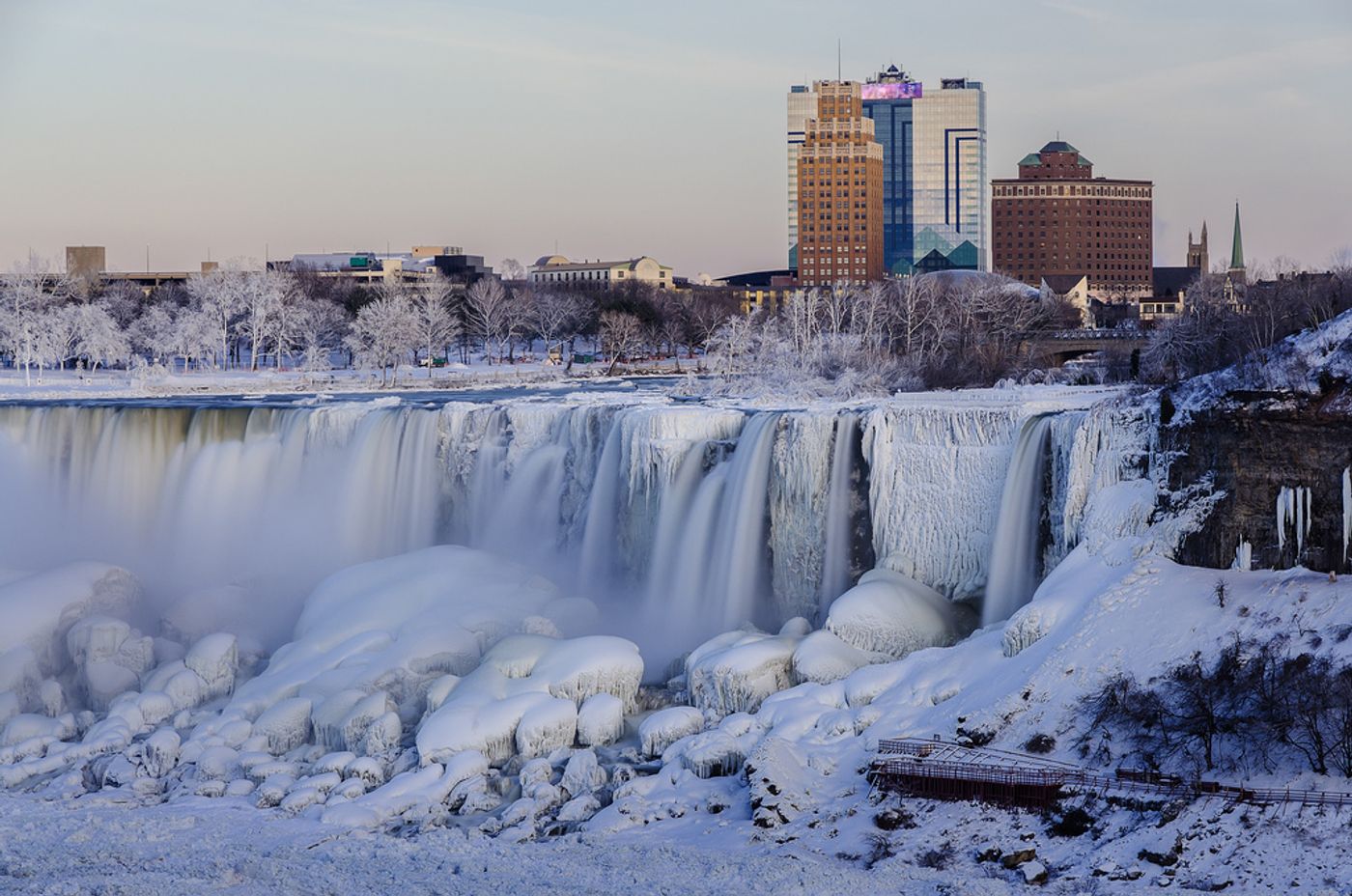Why does a warmer Arctic mean colder winters for us?
So, if we call it global warming, why is it so darn cold out? That’s a question that a lot of people have been asking recently, so let’s break it down simply. There are several studies that have been published over the last few years which explain the science behind this conundrum.
It all has to do with this thing called the polar vortex, which is basically a big area of low pressure and cold air that surrounds both of the Earth’s poles. Because of the overall warming of the Arctic and consequent ice melt, the polar vortex is getting messed with, and that’s resulting in colder temperatures throughout the lower latitudes. Canada, the US, Europe and Eurasia have all seen frigid temperatures and record high snowfall in the last years, and the authors of a 2017 study in the Bulletin of the American Meteorological Society report that 80 percent of the coldest winters across these regions over the past 40 years corresponded with the warmest years in the Arctic. Does that surprise you? Let’s look into it.
“Our latest findings not only confirm the link between a weak polar vortex and severe winter weather but also calculated how much of the observed cooling in regions like Russia and Scandinavia is linked to the weakening vortex. It turns out to be most,” said study co-author Judah Cohen a climate scientist at Massachusetts Institute of Technology.
But why does this happen to begin with and what does it mean for the polar vortex? As Popular Science explains it, “the counter-clockwise flow of air that defines the polar vortex helps keep colder air near the Poles. But when sea-ice north of Scandinavia and Russia melts, the now ice-free ocean releases more warmth, which can rise as far as 18 miles into the stratosphere. It weakens that counter-clockwise circulation, allowing more cold air to escape further south. That leads to those unusually colder winters.” In other words, it’s more complicated than the phrase “global warming” might convey.
The scientists behind this study figured this out by analyzing atmospheric wind speed data during January and February between the years of 1979 and 2015 north of Oslo, where the polar vortex is usually found. Looking to see which winters had a strong polar vortex and which had a weak one, they were able to determine a correlation between average surface temperature with polar vortex strength. A weaker polar vortex means colder winters for the US, Canada, Europe and Asia.
Scientists have also found some other patterns due to this shifting polar vortex. For instance, climate scientists noted in a study published in Nature Geoscience that warmer years in the Arctic trigger not only colder winters, but colder springs the following year. That can be a big problem for our agricultural systems, as colder temperatures reduce vegetation growth.
Another pattern climate studies have observed are super cold winters interspersed with mild winters. That could explain why the winter of 2015 was so horrible, last year was relatively less horrible, and now we’re off to a frigid start this year.
Sources: Popular Science, American Meteorological Society, Journal of Geophysical Research: Atmospheres, Return to Now









